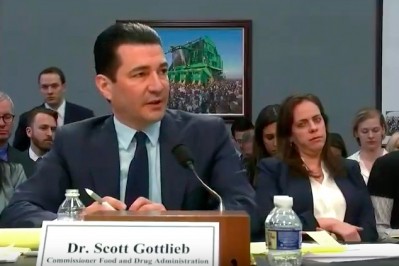Special Edition: Botanicals
Goal of initiative is better tools to predict botanical ingredient safety
The new Botanical Safety Consortium was announced by FDA Commissioner Scott Gottlieb in February, prior to announcing his impending resignation. Stefan Gafner, PhD, chief science officer of the American Botanical Council, told NutraIngredients-USA that the effort has been underway for some time before it was formalized by Gottlieb’s announcement.
Idea started in 2017
“It started at the Eurotox meeting in 2017,” Gafner said during an interview at the recent Expo West trade show. “At that time it was sort of throwing out an idea to have a group of scientist come together to get better tools.”
Gafner said a more detailed plan was developed from that initiative at the meeting in Bratislava, in the Slovak Republic. The plan included the formation of a steering committee, which he was invited to join in the fall of 2018. After that, FDA signed on to the effort.
Botanical ingredients have long been an area of particular concern for FDA. There are many hundreds of these ingredients on the market, though many are not big sellers. But for many of these ingredients, there is limited safety information.
The safety of botanical ingredients overall is not generally in question. These ingredients have been on the market for decades with a relatively minuscule number of adverse events. And some of those can be attributed to ingredients that are ‘botanical’ only in name, such as some of the synthetic stimulant-like ingredients in sports products that claim shadowy antecedents in one plant or another.
More predictive tools needed
Nevertheless, this is a rearward facing view. For botanical ingredients, similar to mutual funds, past performance is no guarantee of future success (or safety).
“The goal of the committee is to have better, validated and more predictive tools to assess the safety of botanicals,” Gafner said.
“By no means do we want to disregard the historical record. But there are new ingredients that have never been assessed. But there may be modifications to certain herbals or plants that used to be taken in a certain way and now manufacturers want to make modifications. Those would be good candidates for these new tools,” he said.
One group that is particular unswayed by a history of safe use is healthcare practitioners. They make their judgements about what’s safe for their patients based on the kind of data that is developed in drug trials.
“There are certain consumers groups that we don’t have a lot of data on. For example, infants and pregnant women. I have seen that health care professionals are really interested in have data to support the safety of botanical ingredients in these populations,” he said.
Gafner said the wide variety of safety information that will be needed to develop truly predictive tools means it's hard to predict when the effort will bear fruit.










